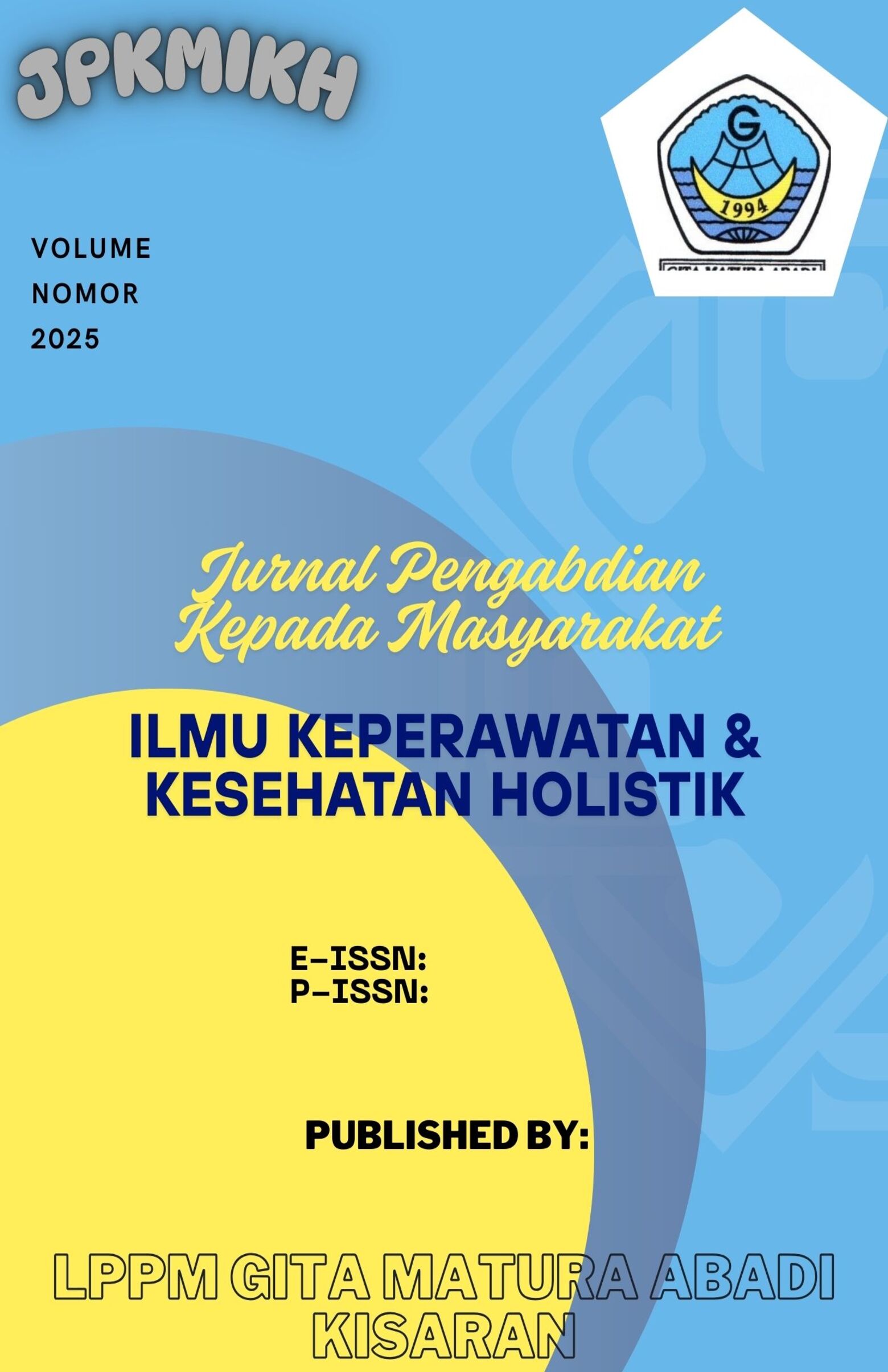EDUKASI TENTANG PENYAKIT INFEKSI KECACINGAN PADA ANAK USIA DINI
Keywords:
Education, Worm Infection, Early ChildhoodAbstract
Worm infection is still a public health problem, especially in young children who are vulnerable due to lack of awareness and understanding of clean and healthy lifestyles. This community service activity aims to improve the knowledge of children at Nurhidayah Binjai Serbangan Kindergarten about the causes, symptoms, and prevention of worm disease. The methods used are counseling with visual media, interactive stories, and evaluation in the form of pre-tests and post-tests. This activity was carried out in March 2025 and was attended by 40 children. The evaluation results showed a significant increase in children's understanding after being given counseling. Before the counseling, only 40% of children knew about worms, while after the counseling it increased to 90%. This activity shows that the interactive counseling method is very effective in improving early childhood knowledge about health. It is hoped that this kind of activity can continue to be carried out periodically to prevent worm disease from an early age. In addition, the role of teachers and parents is also very important in strengthening healthy living habits in the school and home environment.
References
Bahri, S., et al. (2020). Prevalensi dan Faktor Risiko Kecacingan pada Anak di Daerah Endemis. Jurnal Kesehatan Masyarakat, 15(2), 123-131.
CDC. (2020). Soil-Transmitted Helminths. Centers for Disease Control and Prevention.
Depkes RI. (2020). Pedoman Pengendalian Penyakit Kecacingan. Kementerian Kesehatan RI.
Hotez, P. J., et al. (2018). Helminth infections: the great neglected tropical diseases. Journal of Clinical Investigation, 128(3), 1061–1070.
Kemenkes RI. (2019). Laporan Tahunan Pencegahan Penyakit Tropis di Indonesia. Jakarta.
Nasution, H., et al. (2018). Efektivitas Edukasi terhadap Pencegahan Kecacingan di Wilayah Endemis. Jurnal Epidemiologi, 6(1), 40–45.
Sakti, H., et al. (2019). Peran Guru dalam Penerapan PHBS di Sekolah. Jurnal Pendidikan Kesehatan, 7(1), 25–33.
Tanduk, J., et al. (2021). Intervensi Sekolah terhadap Penurunan Angka Kecacingan. Jurnal Kesehatan Lingkungan, 10(2), 150–157.
Unicef Indonesia. (2017). Child Health and Nutrition Strategy.
WHO. (2021). Helminth control in school-age children: A guide for managers of control programmes (3rd ed.).
Downloads
Published
How to Cite
Issue
Section
License
Copyright (c) 2025 Efi Irwansyah Pane , Sri Legawati Legawati , R. Sri Rezeki , Khairunnisa Batubara, Dina Alviyanti, Dwi Wahyuni, Eka Agustina, Azlan Suwanda, Ridho Ardiyansyah

This work is licensed under a Creative Commons Attribution-ShareAlike 4.0 International License.













